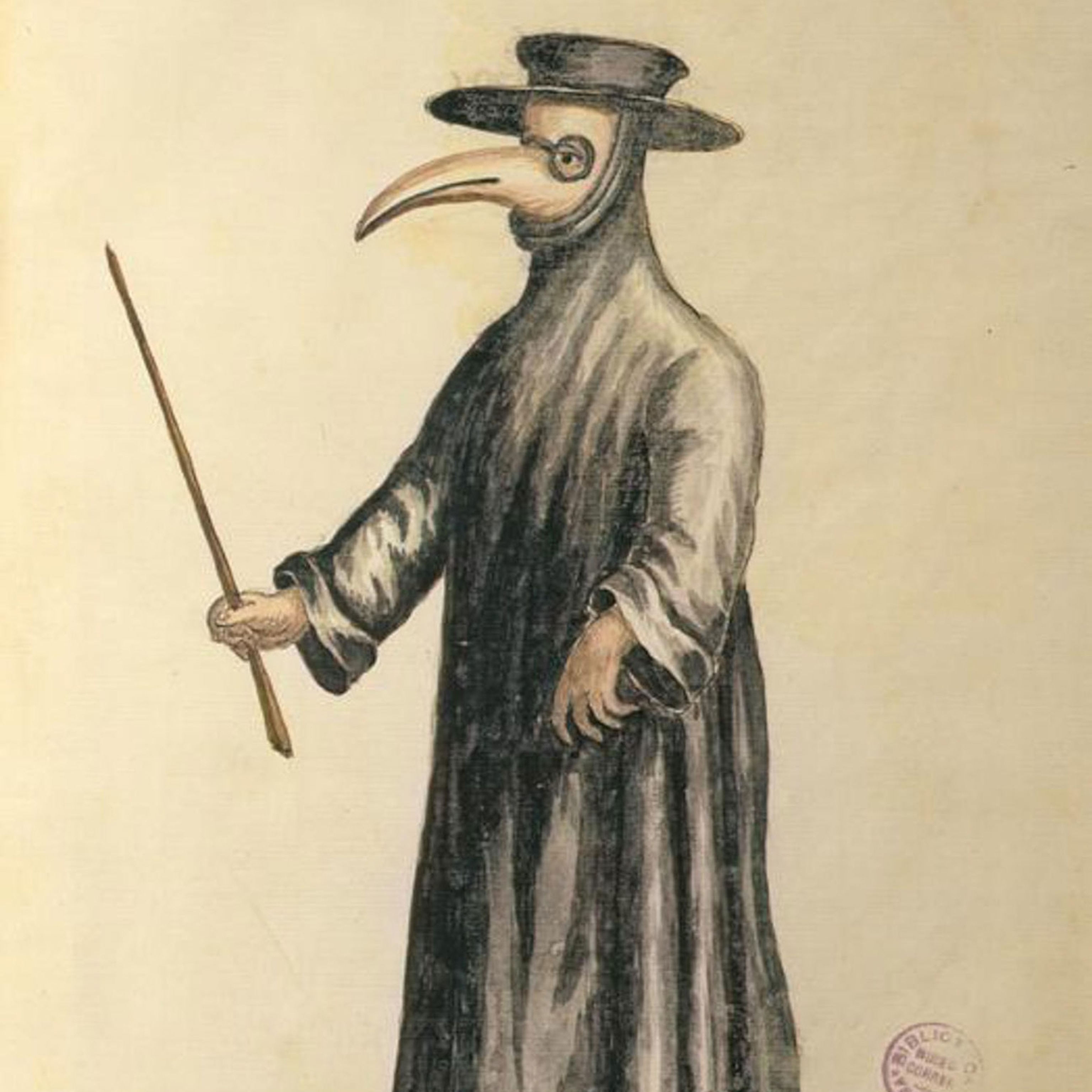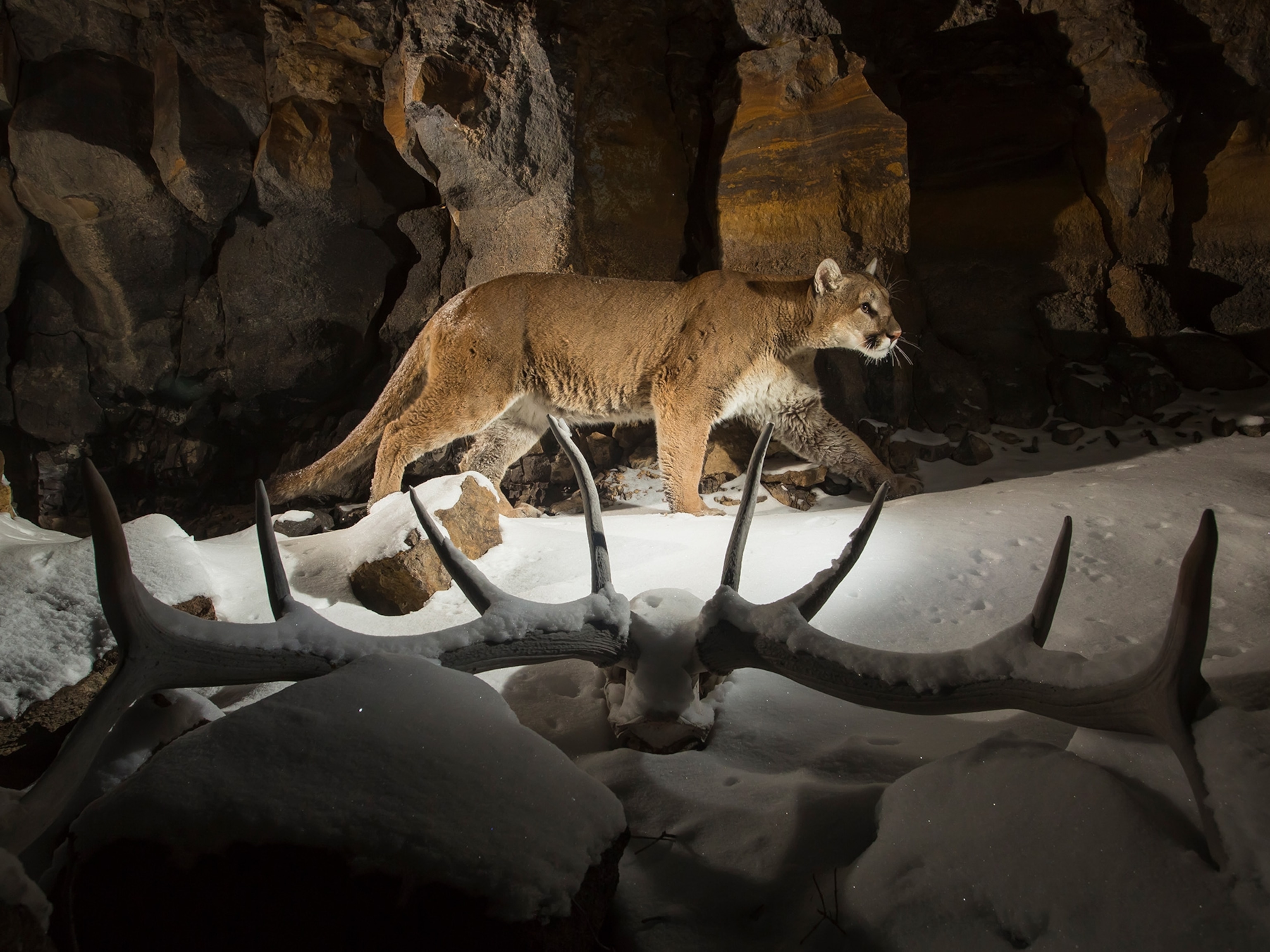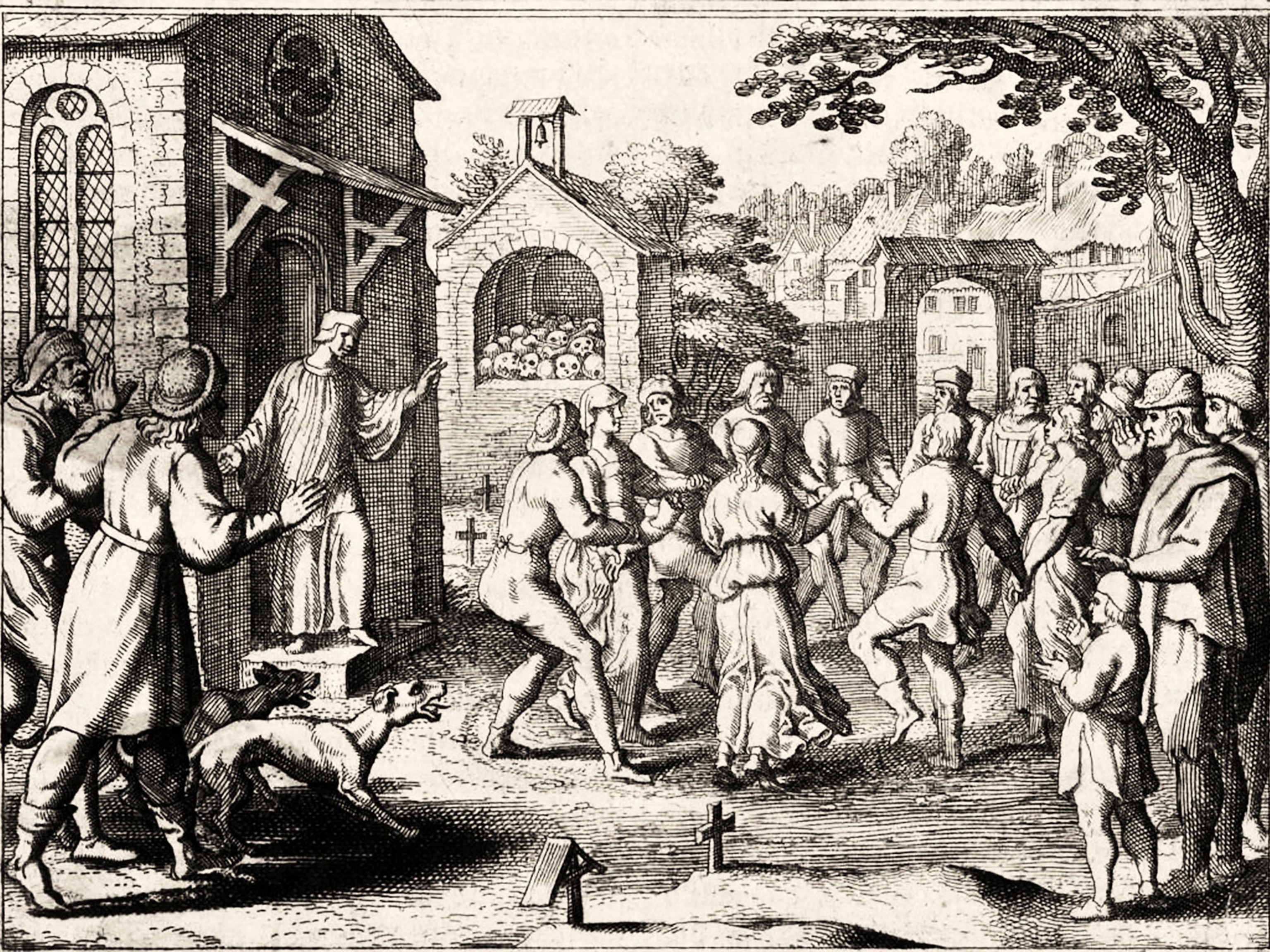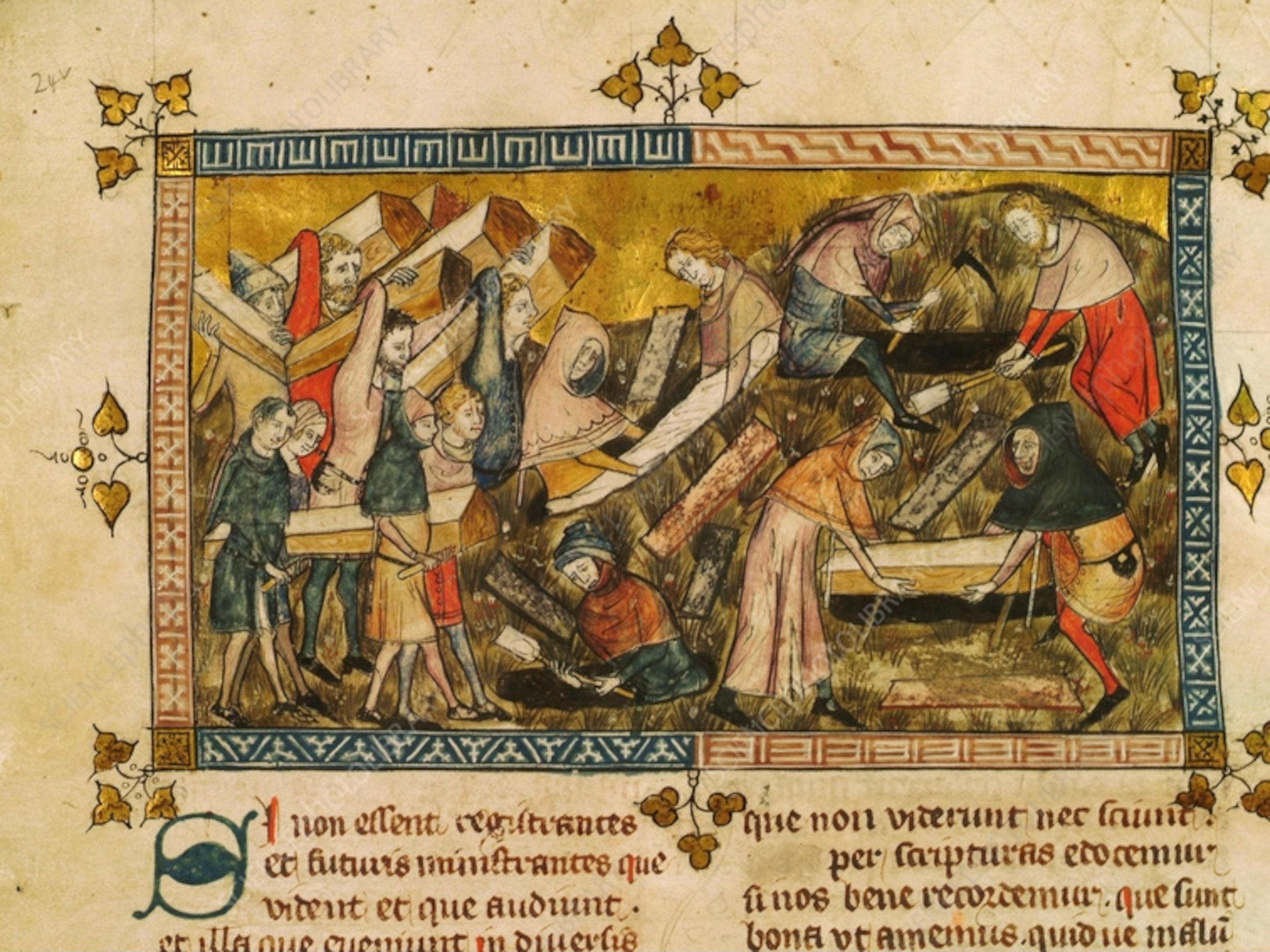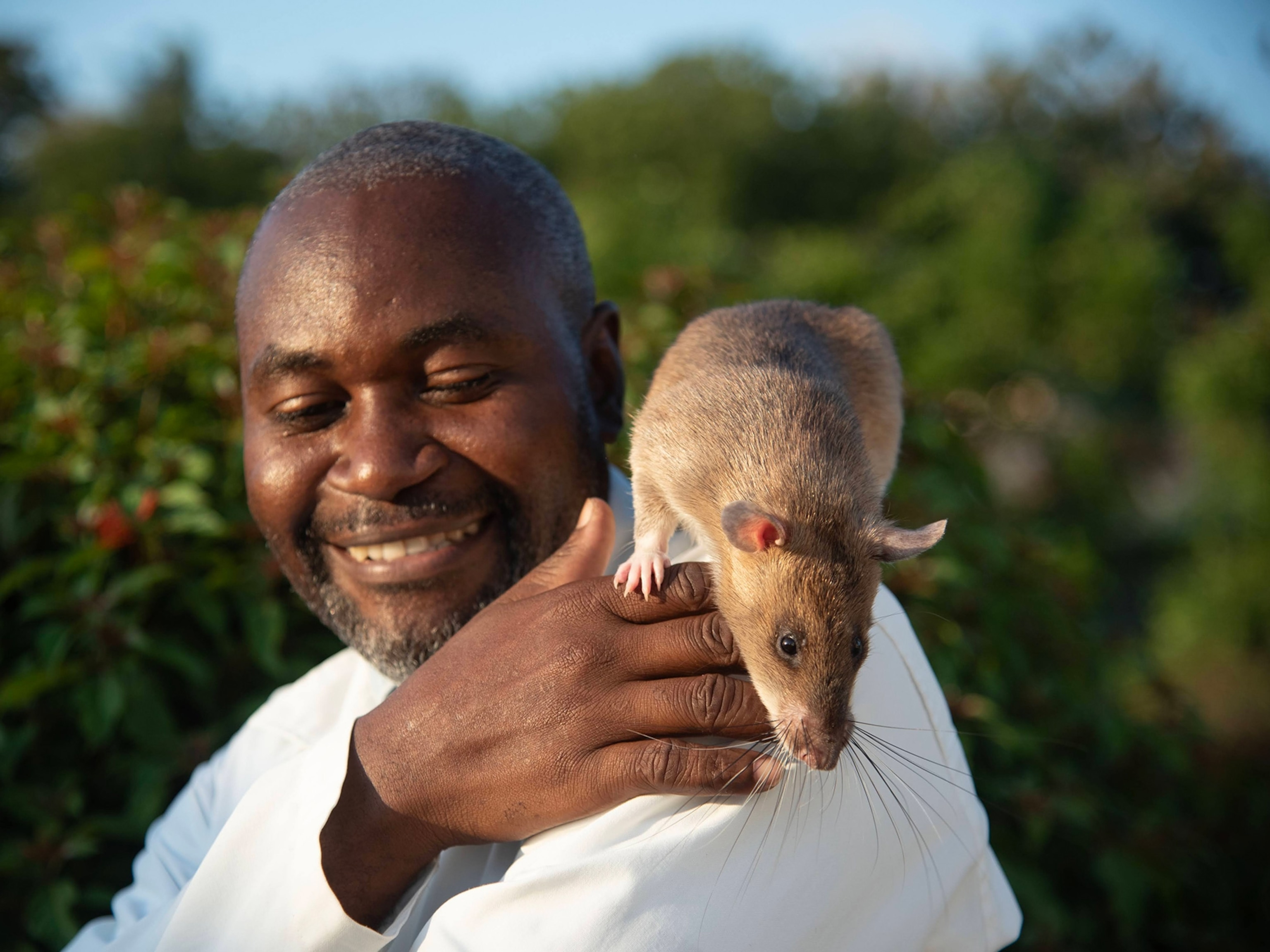
Why plague has never been eradicated—and the danger it still poses today
Centuries after it ravaged Europe in the Middle Ages, plague still circulates on nearly every continent—including the western United States.
Plague doesn't just loom large in history—it still exists today.
California health officials recently confirmed that a South Lake Tahoe resident has tested positive for plague, likely after being bitten by an infected flea while camping in the region.
Although plague may not be the threat it once was, the disease that killed as many as 200 million people and wiped out half of 14th century Europe’s population was never eradicated. Plague still circulates among mammals such as prairie dogs, jackrabbits, coyotes, black-footed ferrets, and even domestic pets. It’s found on every continent except Oceania and Antarctica, and is particularly common in Madagascar, Peru, and the Democratic Republic of the Congo.

In the western United States, there's a seasonal uptick of plague outbreaks from late spring to early fall, particularly in New Mexico, Colorado, Arizona, California, Oregon, and Nevada. Most of these outbreaks occur in wildlife but there are rare occasions when the disease makes a jump to humans.
(Why plague doctors wore those strange beaked masks.)
Today the U.S. sees an average of seven human cases of plague a year, mostly bubonic plague, which is contracted from flea bites and is marked by the development of swollen, painful lymph nodes called buboes.
“It’s an extremely rare infection,” says Dave Wagner, director of the Biodefense and Disease Ecology Center at Northern Arizona University’s Pathogen & Microbiome Institute. “I always tell people, look both ways before you cross the street before you worry about plague.”
Still, what drives these outbreaks—and how serious is the risk to humans today? Here’s what you need to know.
What animals can spread plague?
Caused by the bacterium Yersinia pestis, plague is a zoonotic disease, which means animals can pass it to humans. In addition to bubonic plague, other forms include septicemic plague, which travels in the bloodstream, and pneumonic plague, which develops in the lungs and is the only form that humans can transmit to one another.
Black rats—your average house rat—have been blamed for history’s most horrific plague pandemics. But, Wagner says, they’re far from the only culprits. “It’s primarily a disease of rodents and their fleas,” he says.
Fleas live off the blood of mammals, and they especially love attaching themselves to rodents—not just black rats. When a rodent gets infected with Y. pestis, it promptly passes the pathogen to its fleas. And when the rodent dies, the fleas jump to their next host—which may be a human. A 2018 study concluded that plague historically spread widely in Europe not through rats, but via fleas and lice that lived on humans.
(Here’s how infections jump from animals to people.)
Scientists aren’t certain what makes rodents such good hosts for Y. pestis. Wagner says it likely has something to do with their tendency to live in burrows where fleas are plentiful. Rodents also likely have a high density of the bacteria in their blood, at least compared to other mammals. Wagner points out that fleas can only sip very small amounts of blood so there has to be a lot of bacteria in that sip for a host to infect the flea.
The species that carry the plague vary by region. In Madagascar, for example, black rats are still the most common host. In North America, however, plague is most commonly seen in prairie dogs, as well as other native rodents such as wood rats and squirrels.
Scientists also have found evidence of plague among wild animals other than rodents, including rabbits, deer, black-footed ferrets, mountain lions, coyotes—and even among domestic cats and dogs. Some of these animals may contract the disease from eating an infected animal, while others may simply be in the wrong place at the wrong time when an infected flea is looking for a new host.
“Imagine what a dog is going to do if all the prairie dogs have died [of plague] down in their burrows and it smells delicious,” Wagner says. “They’re going to go dig around in the burrow.”
But scientists say that it’s difficult to unravel whether these wild animals have simply contracted plague from rodents—or whether they’re also responsible for keeping plague alive. Perhaps prairie dogs just get the blame because it’s particularly obvious when plague has infected their typically active, dense colonies.
“If the prairie dogs disappear, the number one suspect is going to be plague,” Wagner says.
Where do plague outbreaks in the U.S. typically occur?
Black rats likely brought the plague to North America in 1900, when the continent’s first case was recorded in San Francisco. Historical records and genetic studies of that specific Y. pestis strain suggest that stowaway rats arrived in the port aboard a steamship from Hong Kong, then scurried into the city where they mingled with the local rodents.
The bacteria spread throughout the western U.S., where it began to circulate among small native rodents. But it never spread much farther than that. Today, cases are typically recorded west of the 100th meridian, the longitudinal line stretching from North Dakota to Texas at the edge of the Great Plains.
(Bubonic plague may have originated in ancient Egypt.)
It’s not clear why. Paul Mead, chief of the bacterial diseases branch of the CDC’s Division of Vector-Borne Diseases, told National Geographic in 2022 that there were early outbreaks in eastern port cities. Florida and other parts of the South also had outbreaks, but plague never managed to establish itself there long-term. Scientists suspect it might be related to the differences in the soil in the West combined with the burrowing lifestyles of local rodents.
“The hypothesis is that … these provide an ecologic niche in which [plague] can persist and exist,” Mead said. It’s possible that the arid western soil makes for a better home for plague or for the amoebae that help it replicate and survive. But he and other experts say it’s ultimately still a mystery why plague is only seen in the western U.S.
Modern outbreaks are mostly seen in rural areas, where rodent colonies tend to be larger, Mead said. Improved sanitation and building codes in cities have also helped urban rates decrease. Outbreaks in cities do still occur, however—including a 2007 outbreak among tree squirrels in Denver’s City Park.
There are typically a dozen or so reports of plague in animals each year, typically during the summer, according to Mead. But it’s not clear what drives infections. There seems to be “some sort of environmental cue where the conditions are right that it erupts from the reservoir, whatever that is, into these more conspicuous species,” Wagner says.
How risky is plague to humans?
It’s highly unlikely for humans to fall ill with plague, but if they do, the disease is no longer a death sentence for those who have access to the wide variety of antibiotics that treat it. Although some worry about the potential for antibiotic-resistant strains to change that calculus, scientists say that the current risk remains low.
(Plague was one of history’s deadliest diseases—until we found a cure.)
Plague also poses a low risk to people living in Western countries like the U.S. because they typically don’t spend a lot of time in flea-infested areas. Most flea species have a preferred species to feed off. Once they’ve found a host of that species, they’re unlikely to jump to another animal until that host dies.
You therefore might face some risk of being bitten by an infected flea if you happen to walk through a prairie dog colony with individuals that have recently died from plague. But “unless you’re living next to a prairie dog colony in the western U.S., I think your risk is essentially zero,” Wagner says.
There are some very rare circumstances in which humans can be infected by an intermediary animal. Dogs, for example, can bring infected fleas back to their humans. Domestic cats, which are especially susceptible to the respiratory form of plague, can infect people around them through sneezes and other respiratory droplets, much like how colds, the flu, and COVID-19 are spread.
To prevent infection, Mead says it’s important for people who live in rural parts of western states to be aware of their surroundings. Report large prairie dog die-offs to local health authorities. Always give pets flea prevention treatments, and don’t allow them to roam in areas with prairie dog colonies.
Why haven’t we tried to eliminate plague?
While risk to humans is low, it’s more of a danger to certain at-risk species—particularly the endangered black-footed ferret. Plague is one of the major threats to the survival of the species, which feeds on prairie dogs. In recent years, conservationists have launched pioneering efforts to save these ferrets by vaccinating them against plague.
But Mead points out that in order to eradicate a disease, there needs to be a thorough understanding of how it spreads. Plague is endemic now in the western U.S., and scientists still don’t know how it persists during times when there aren’t any outbreaks. It could be living in the soil or perhaps being passed around among wildlife whose outbreaks are more difficult to detect. You might suppress plague in one area through vaccination only for it to pop up somewhere else.
“It’s a little bit like grassfires,” Mead says. “The bottom line is that we in the West will have plague around as a low-level risk probably for quite some time.”


